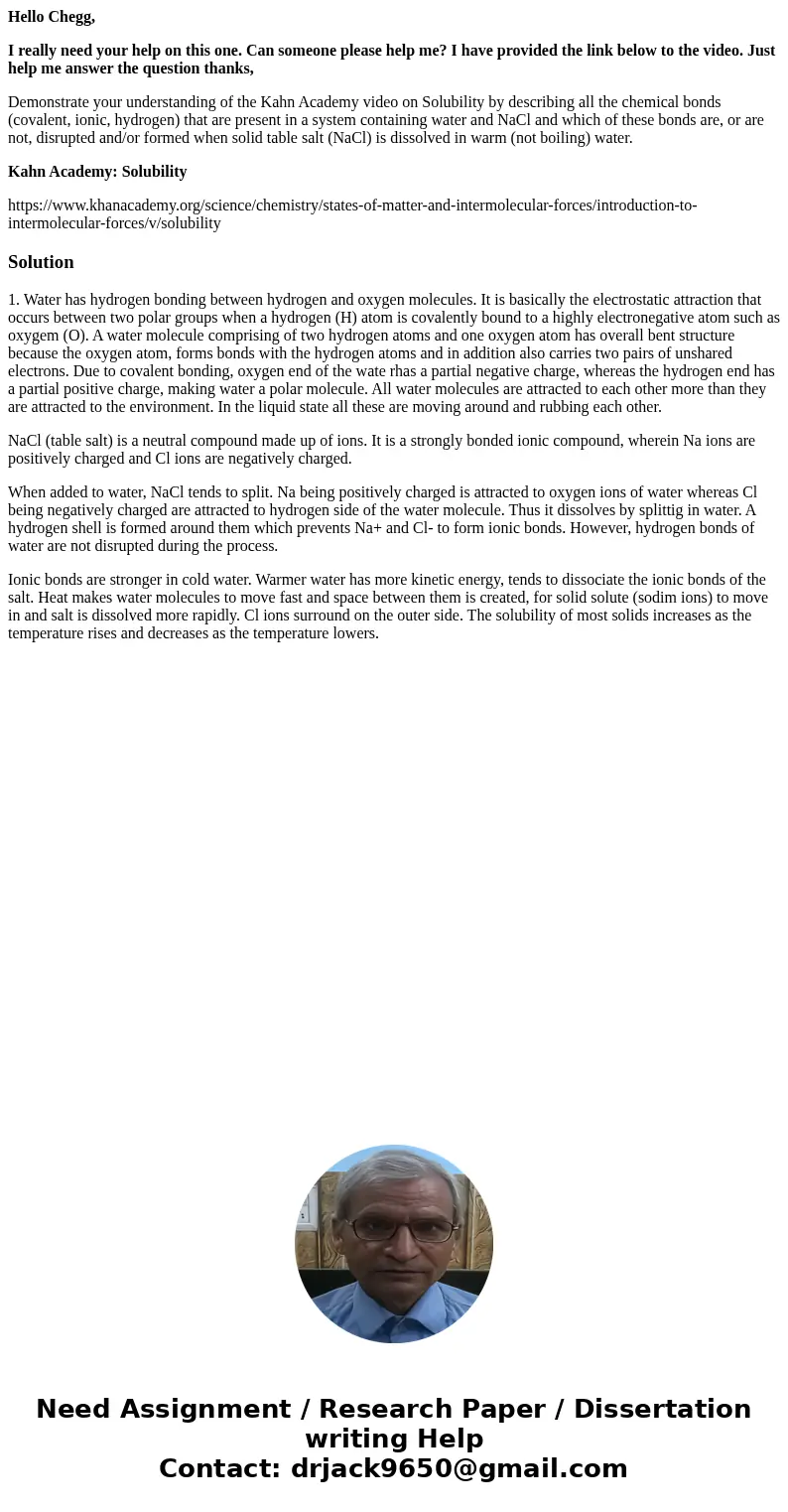Hello Chegg I really need your help on this one Can someone
Hello Chegg,
I really need your help on this one. Can someone please help me? I have provided the link below to the video. Just help me answer the question thanks,
Demonstrate your understanding of the Kahn Academy video on Solubility by describing all the chemical bonds (covalent, ionic, hydrogen) that are present in a system containing water and NaCl and which of these bonds are, or are not, disrupted and/or formed when solid table salt (NaCl) is dissolved in warm (not boiling) water.
Kahn Academy: Solubility
https://www.khanacademy.org/science/chemistry/states-of-matter-and-intermolecular-forces/introduction-to-intermolecular-forces/v/solubility
Solution
1. Water has hydrogen bonding between hydrogen and oxygen molecules. It is basically the electrostatic attraction that occurs between two polar groups when a hydrogen (H) atom is covalently bound to a highly electronegative atom such as oxygem (O). A water molecule comprising of two hydrogen atoms and one oxygen atom has overall bent structure because the oxygen atom, forms bonds with the hydrogen atoms and in addition also carries two pairs of unshared electrons. Due to covalent bonding, oxygen end of the wate rhas a partial negative charge, whereas the hydrogen end has a partial positive charge, making water a polar molecule. All water molecules are attracted to each other more than they are attracted to the environment. In the liquid state all these are moving around and rubbing each other.
NaCl (table salt) is a neutral compound made up of ions. It is a strongly bonded ionic compound, wherein Na ions are positively charged and Cl ions are negatively charged.
When added to water, NaCl tends to split. Na being positively charged is attracted to oxygen ions of water whereas Cl being negatively charged are attracted to hydrogen side of the water molecule. Thus it dissolves by splittig in water. A hydrogen shell is formed around them which prevents Na+ and Cl- to form ionic bonds. However, hydrogen bonds of water are not disrupted during the process.
Ionic bonds are stronger in cold water. Warmer water has more kinetic energy, tends to dissociate the ionic bonds of the salt. Heat makes water molecules to move fast and space between them is created, for solid solute (sodim ions) to move in and salt is dissolved more rapidly. Cl ions surround on the outer side. The solubility of most solids increases as the temperature rises and decreases as the temperature lowers.

 Homework Sourse
Homework Sourse